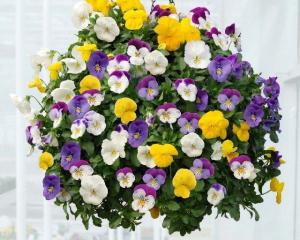Looking forward to spring, Gillian Vine opts for pulsatillas.
Furry buds, pretty flowers and fluffy seed heads ensure pulsatillas' popularity and because they don't mind lime, they grow particularly well in chalky areas such as North Otago.
Pulsatillas are closely related to anemones - compare the flowers and you'll get the picture - and get their common name of pasque flower because, in Europe, P. vulgaris flowers around Easter, when Christians celebrate the Paschal mystery.
Although there are some 30 species in the genus, the most common is P. vulgaris, a native of higher parts of central Europe and as a result, is fully hardy.
As well as being attractive garden plants, P. vulgaris and another European species, P. nigricans, are used in homeopathic medicine to treat a range of ailments and conditions from orchitis and epididyitis in men to pre-menstrual syndrome (PMS) in women, as well as headaches, insomnia, asthma, digestive upsets and mood swings.
Native Americans used local species to treat coughs and colds, while the Blackfoot people were said to use pulsatilla to induce abortions or hasten childbirth - a reminder that the plant can be highly toxic. Pregnant or breastfeeding women should not take preparations containing pulsatilla.
Pasque flowers grow from woody crowns, which can be divided in autumn or spring while they are dormant. However, because they don't like being disturbed, it can be a case of sacrificing next season's flowers to get additional plants.
In the right spot, pulsatillas self-seed freely and throw up lots of little plants. Alternatively, the seed can be gathered when ripe and sown in trays to plant out later. If you grow more than one colour, seedlings can produce a range of flower tones, always exciting for the gardener.
Flowers are usually purple or lavender - the darkest are those of P. nigricans - but they also come in red (look for P. vulgaris red bells), white (alba) and pink (Papageno, pearl bells) and coppery tones, as well as the rare yellow-flowered P. sulphurea. Unfortunately, like P. vernalis, which has pearly white flowers, P. sulphurea does not seem to be available in New Zealand.
Don't deadhead pulsatillas, as they have a second, some say lovelier, attraction when the spent flowers produce fluffy seed heads that stay on the plants for weeks.
Unlike their relatives, buttercups, pasque flowers die if their feet get wet, which is why they are often grown in rockeries that get a lot of sun: those in the Dunedin Botanic Garden and Invercargill's Queen's Park are planted in this way and are well worth visiting in spring.










